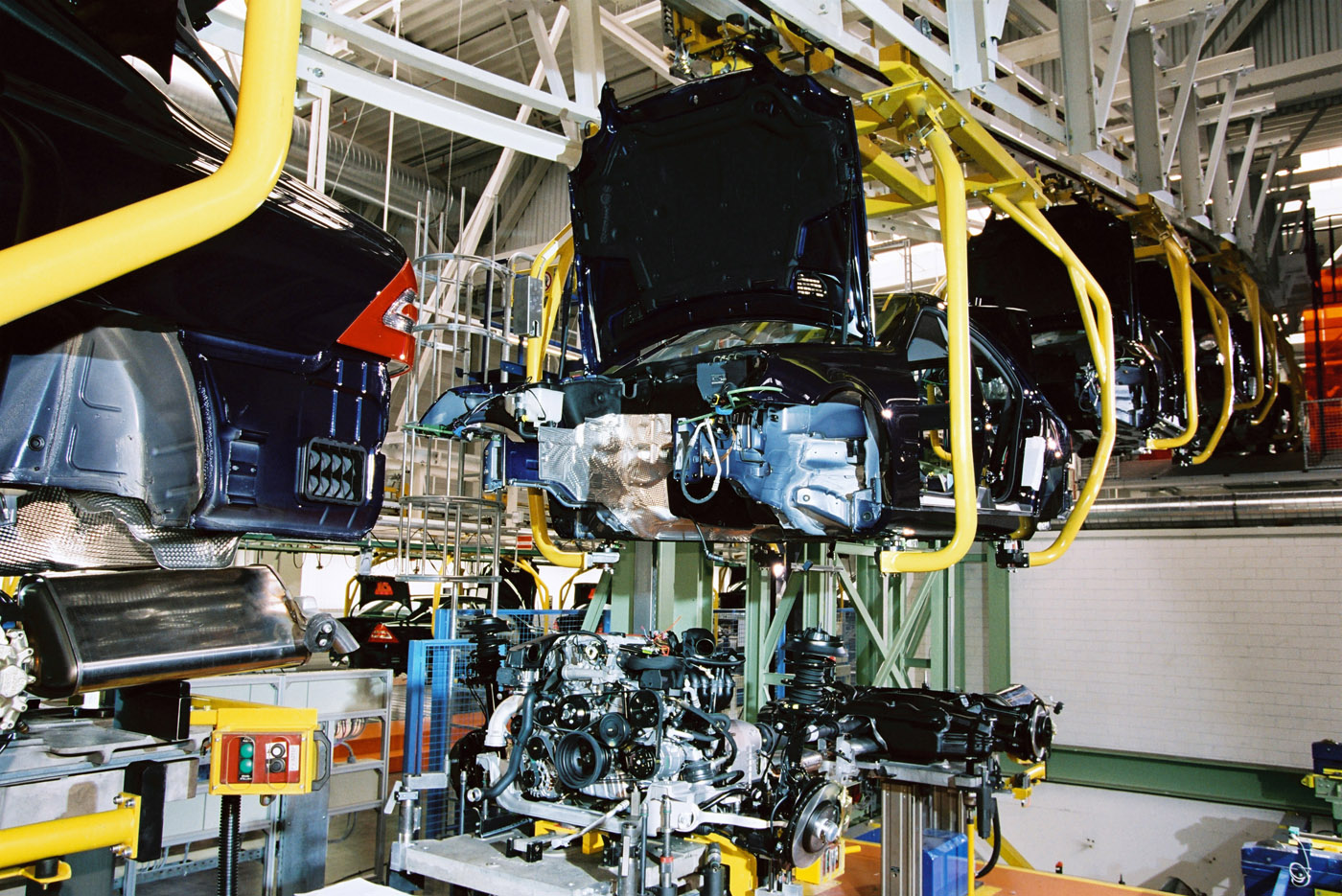A Living Factory
The time it takes for new products to come to market is getting ever shorter. As a consequence, goods are being produced using manufacturing facilities and IT systems that were designed with completely different models in mind. Fraunhofer developers want to make factories smarter so they can react to changes of their own accord.

As soon as DNA is mentioned, we automatically think of biology and living beings. It is the DNA molecule found inside each and every cell that holds the encoded blueprints for humans, animals or plants. But factories too have a master plan of this kind. All modern manufacturing facilities resemble living organisms in their complex structure. And, just as in biology, all their constituent parts are linked to one another and have to be painstakingly coordinated. Now, the Fraunhofer Institute for Optronics, System Technologies and Image Exploitation IOSB in Karlsruhe has taken up the challenge – together with Fraunhofer IPA in Stuttgart and Fraunhofer IPT in Aachen – of decoding “factory DNA”.
It’s a catchy concept, but one that is bound up with solid goals: The aim is to reduce the costs that arise whenever products or machines have to be changed. Up to now, the interplay between a factory’s various systems has not been optimal. This problem is at its most obvious when production is being switched to a new item, such as a new model of car. The simple addition of a manipulator to a production line – or even just an operating system update – can cause havoc, since the slightest of changes has an impact on the entire operation. What is lacking is an intelligent link between components: the products being manufactured, the facilities doing the manufacturing, and the IT systems controlling things. This is where the experts from the IOSB are stepping in. They want to make the factory smarter by way of new interfaces that will enable it to react more or less autonomously to any changes. In this endeavor the researchers are benefiting from their years of experience of developing software solutions for factories. They are working first and foremost with Daimler AG: Their “ProVis.Agent” production management system manages around 2,000 machines in the plant where the C-Class Mercedes is made.
The key thing is to put in place intelligent links between the manufacturing facilities and the IT systems. Today, if a product is changed, the first step is to rearrange the production line. Only then is the IT system reconfigured. What’s more, the details of each machine that belongs on the line have to be entered manually into a computer. This work is tedious and error-prone, involving as it does a multitude of cryptic alphanumeric combinations. “And the trouble is, you only notice any mistakes when the line is back up and running,” says Dr. Olaf Sauer, division director at the IOSB. Thankfully, the research scientist and his team have managed to come up with a more elegant approach: Now employees can simply plug in a data cable and that’s that. The magic words are “plug and work”.
Home computing underwent a similar development. In the past, you had to install the appropriate driver before you could connect a peripheral device. Nowadays, all you need to do is plug in a USB cable. The new device uses this to communicate with the PC and to identify itself. This is effectively the approach that is set to be taken in modern factories, even if things there are a little more complex. For instance, a factory will often have many different kinds of machine built by many different companies. And the sector is nowhere near having standardized software – or even a standard software language. So the researchers have invented and patented a digital translator to take the various digital device descriptions and convert them into a standard machine language called Computer Aided Engineering Exchange (CAEX). This information is then sent to a special data storage system, which is also being patented by the Institute. “Together, these two components are enough to make a simple USB-type solution feasible,” says Sauer. “Once the data have started to flow, the computer can design a process control plan for the new production line unaided.” The IT specialists have proved that the procedure works by putting together a miniature model facility comprising four components: a conveyor belt, a turntable, a testing device, and a further conveyor belt. Work has already started on an initial real-world application.